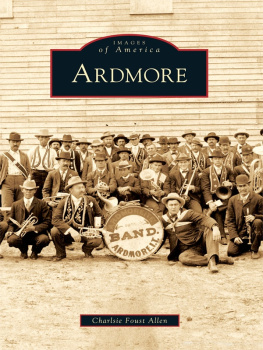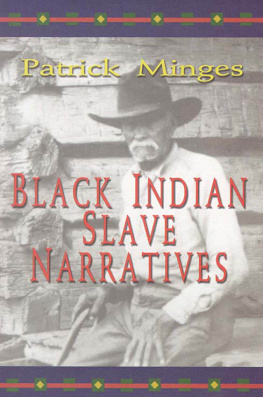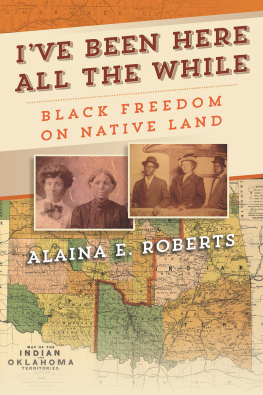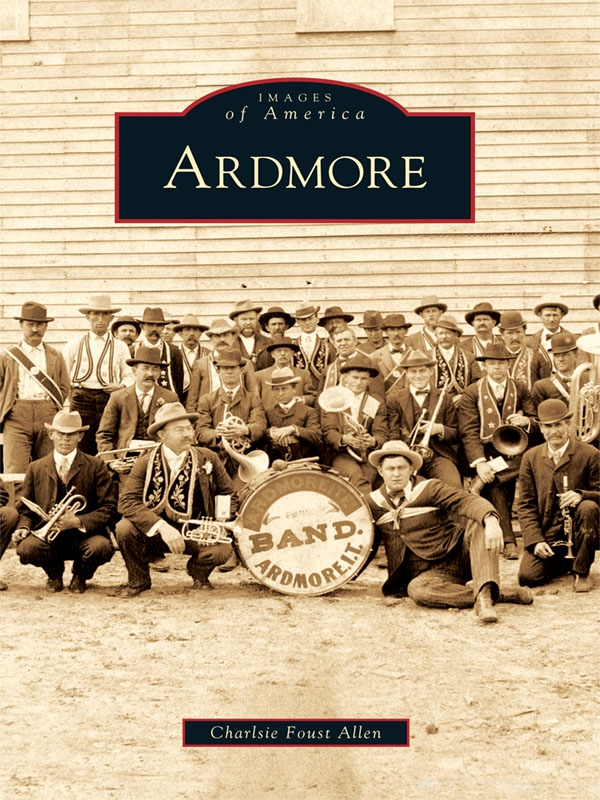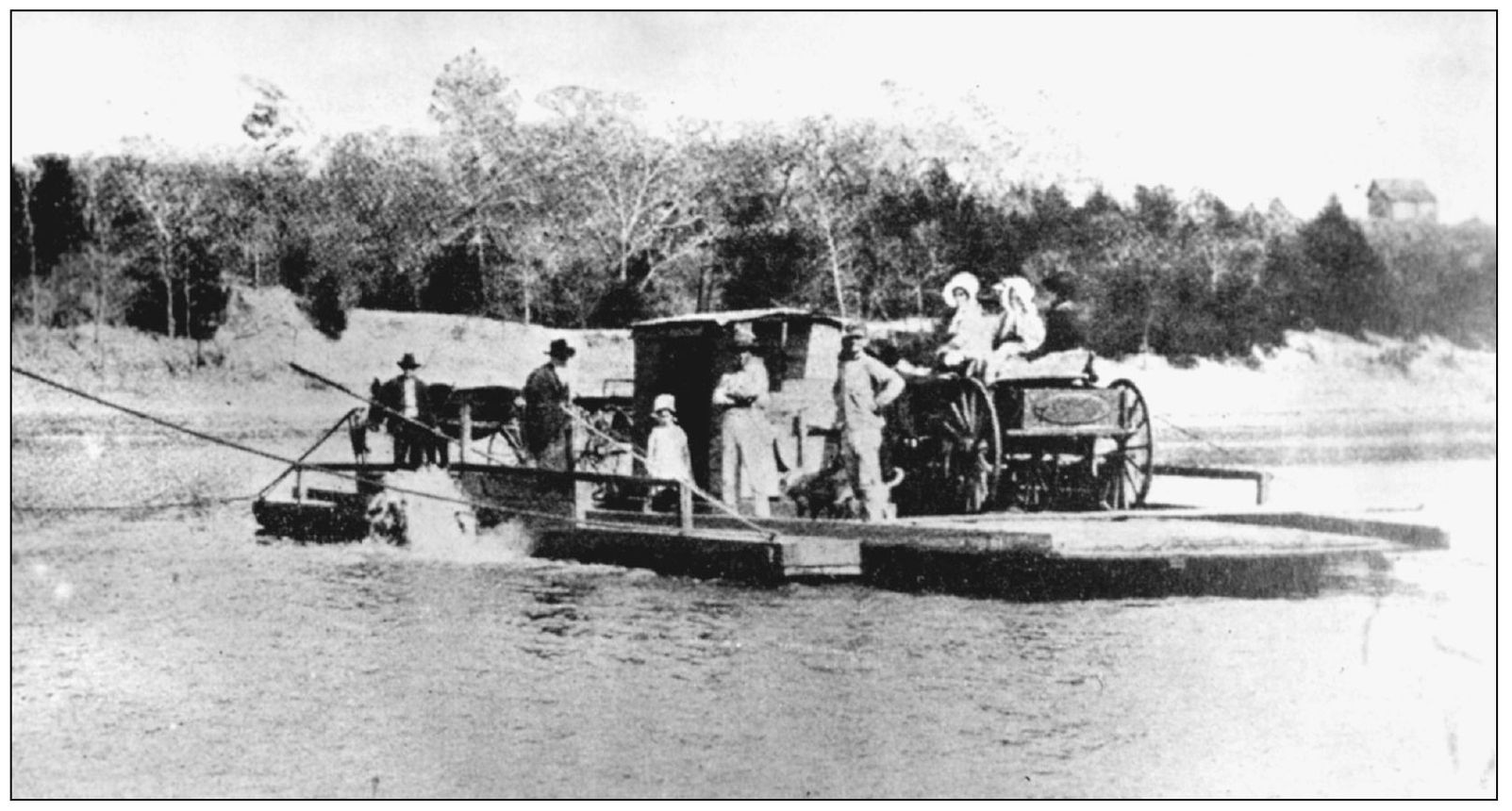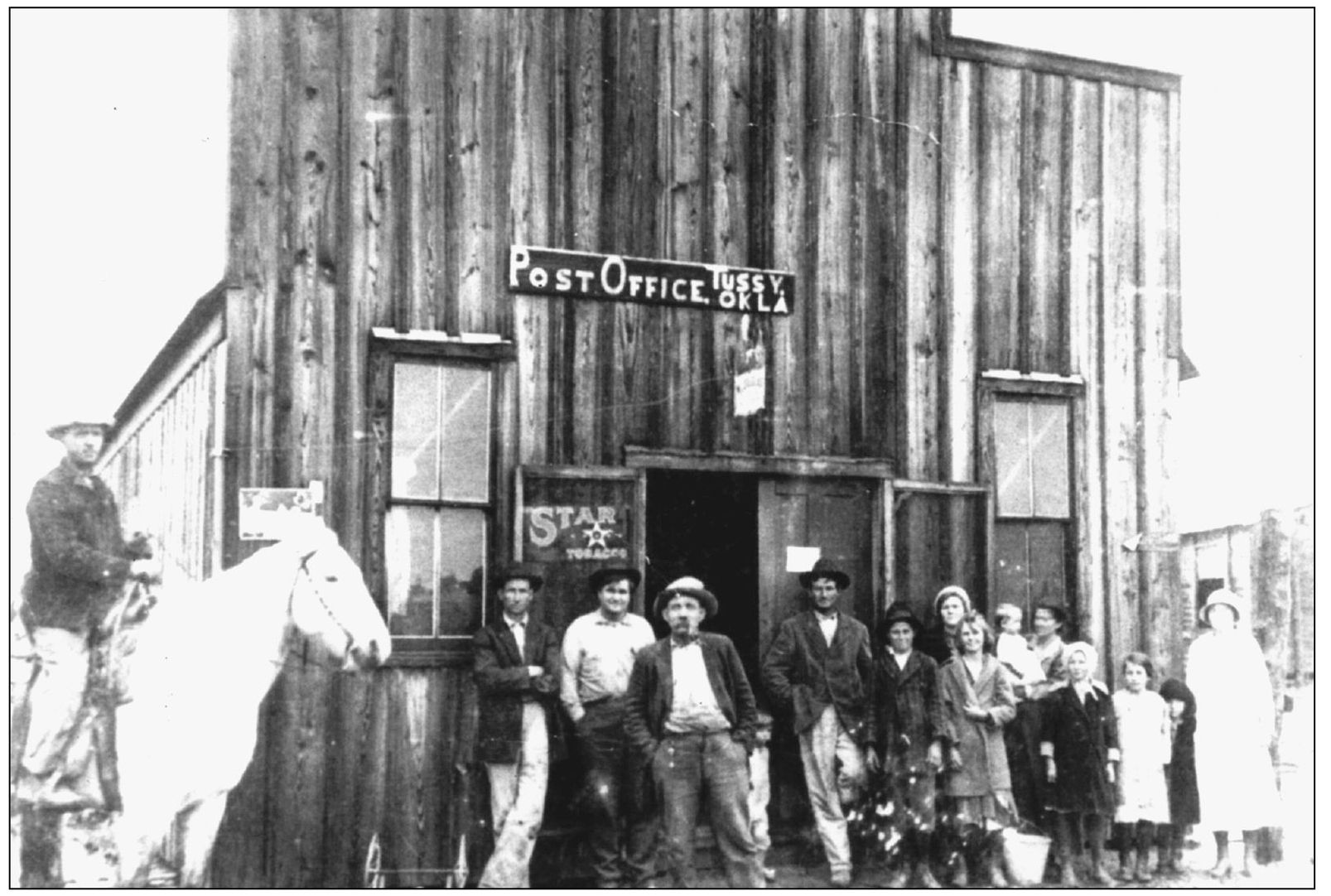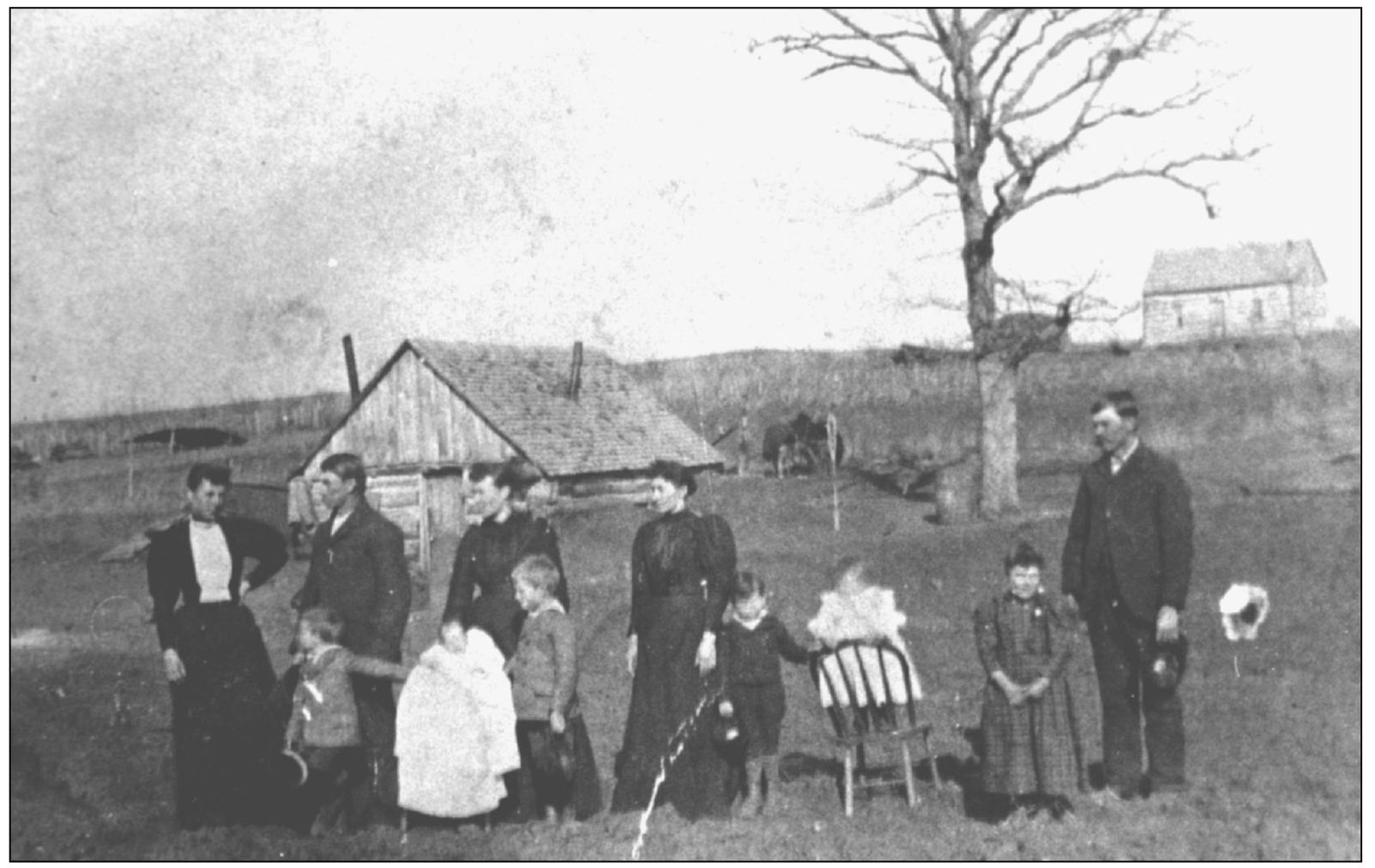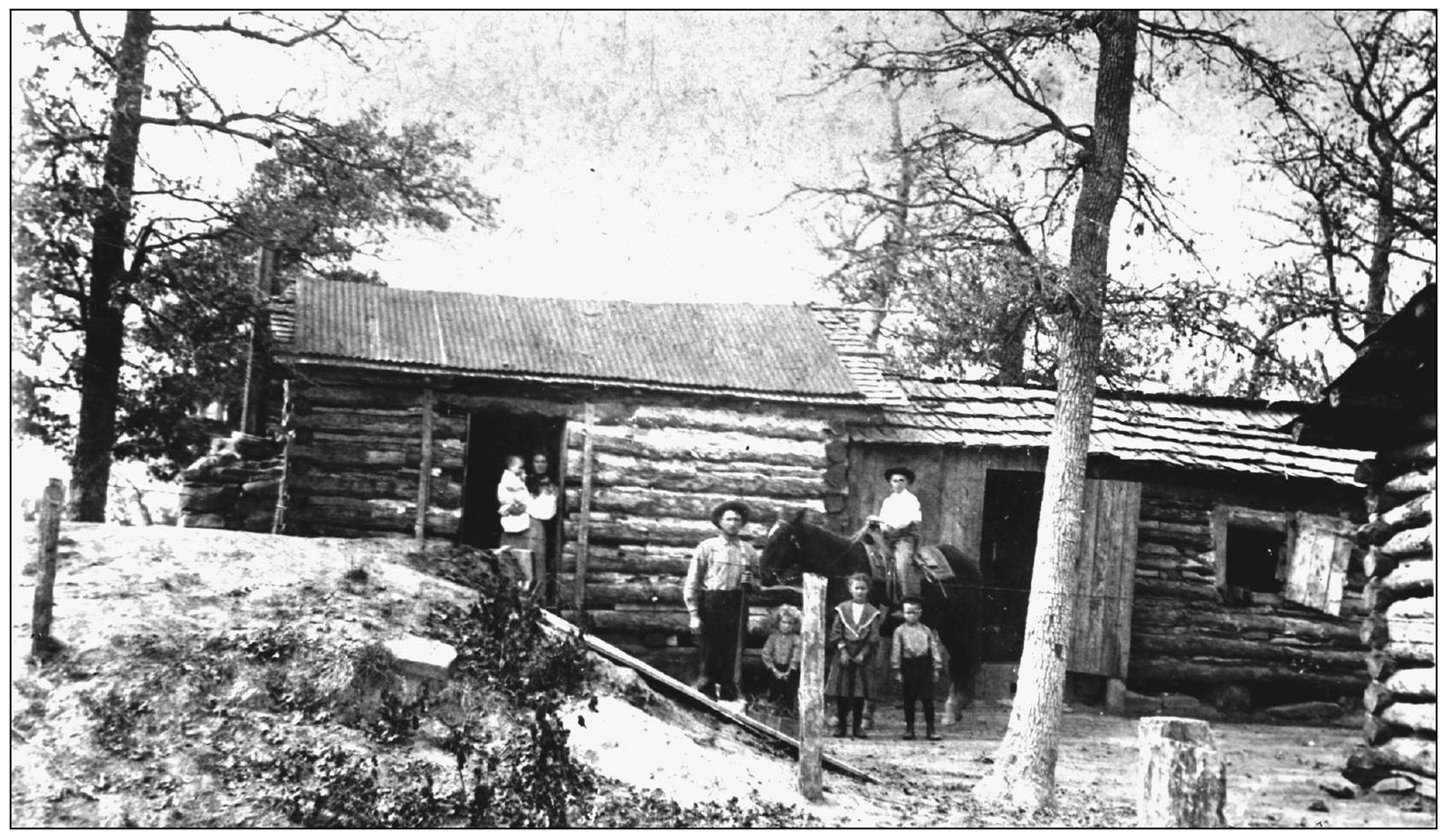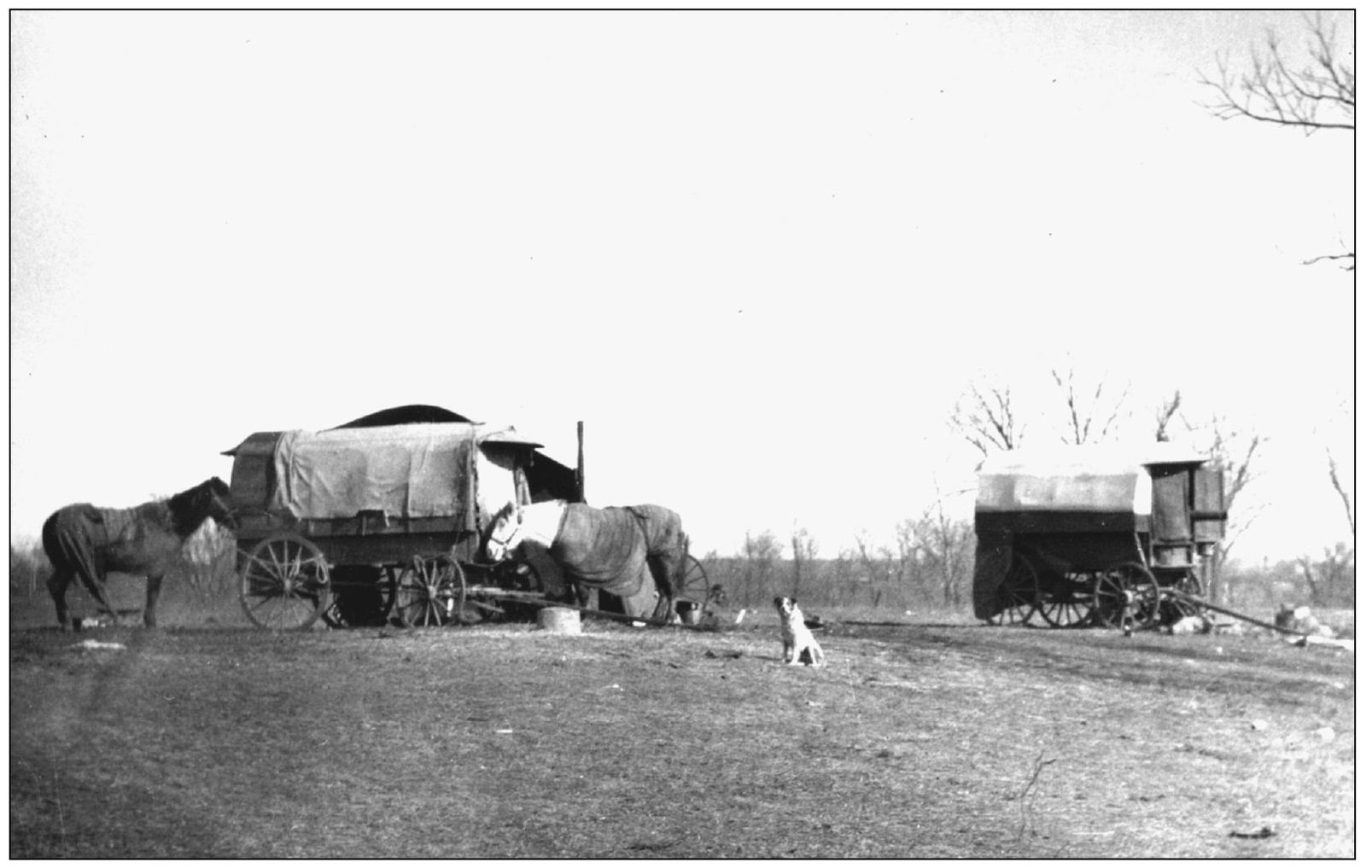ACKNOWLEDGMENTS
Special appreciation is extended to Dr. Paul N. Frame for his book A History of Ardmore, Oklahoma, From the Earliest Beginnings to 1907 , which provides a wealth of information about the city from prehistory until statehood in 1907. He wrote the manuscript in 1949 as his masters thesis, and it was published in book form in 1995. Much of the factual information about the pictures in this volume comes from Dr. Frames book.
Appreciation and thanks are extended to Sally Gray for her encouragement, her invaluable information, her love of local history, and for access to her private photograph collection, which includes many people and buildings.
Ardmore Main Street Authority opened its collection of photographs, which includes a historical look at downtown buildings and businesses throughout the citys history, including many photographs of the great fire in 1895 and the 1915 railroad tanker explosion.
The Greater Southwest Historical Museum made available its photograph collection, which includes the earliest known photograph of Ardmore as a tent city as well as churches, schools, and the original two-story Carnegie Library.
Ardmore Public Library has been very helpful in allowing access to the McGalliard Collection, which is an extensive compilation of photographs, memorabilia, and artifacts by William A. Mac McGalliard from Ardmores earliest history through most of the 1900s. Of great importance in the collection are the notes that identify people, pictures, and events that otherwise may have been forgotten.
Special thanks to Ted Gerstle, my editor, for his continued encouragement and support in completing this volume.
This book is dedicated to the intruders, whose desire to take the land and build upon it helped create a state; to my grandparents Charley and Lillie Cole Palmer and Wilbert and Lula Collins Foust; and to my great-grandparents George Washington and Nancy Jane Williams Cole and Jerry and Diretha Barnes Collins, all of whom lived through the events in this book.
BIBLIOGRAPHY
Ardmore State Herald . April 19, 1895.
Bridges, Butch. This and That Newsletter . Vol. 512, 2327.
Frame, Paul N. A History of Ardmore, Oklahoma, From the Earliest Beginnings to 1907 . Ardmore, OK: Greater Southwest Historical Museum, 1995.
Gould, Chas N., Ph.D. Geography of Oklahoma . Ardmore, OK: Bunn Brothers, 1909.
Robinson, Gilbert L. Transportation in Carter County 19131917. Chronicles of Oklahoma Volume 19, No. 4. December 1941.
www.geocities.com/rickw_123/hist2.htm
www.rootsweb.com/~okgarvin/ipp/tusseyhenryipp.htm
Find more books like this at
www.imagesofamerica.com
Search for your hometown history, your old
stomping grounds, and even your favorite sports team.
One
THE INTRUDERS
Since the beginning of this nation, people have been moving west. White people had already settled southeastern Oklahoma while it was still part of Arkansas Territory. With passage of the Indian Removal Act of 1832, those settlers were notified they would have to vacate the land that had become part of the Choctaw Nation.
The settlers burned their homes, barns, communities, and the courthouse with all its records and moved back to Arkansas. Each of the five tribes used a permit system to bring artisans, skilled workers, and professionals into tribal lands to build businesses, provide education to tribal children, and establish professional services. The permit system opened the floodgates to a white invasion. Pickens County was one of four counties in the Chickasaw Nation along with Pontotoc, Panola, and Tishomingo with the nations capital located in Tishomingo. Approximately 5,000 Chickasaw citizens occupied the four new counties. All land was owned by the tribe communally, but a citizen could establish farming or ranching rights to any portion of land so long as he or she occupied the land being claimed. It was common practice for white men to marry Chickasaw women, and in fewer numbers white women also intermarried, in order to gain tribal citizenship. They could then claim large tracts of land for running cattle or lease small portions of land to white and black settlers who entered the nation under the permit system.
As word of the many opportunities in Indian Country circulated in the United States, more and more people poured into the land. By 1890, there were approximately 50,000 intruders and 5,000 citizens in the Chickasaw Nation with the preponderance of intruders located in Pickens County in communities along the railroad tracks. The intruders established businesses and cities, cultivated the land, and ran large herds of cattle on the open plains. The rest of the Chickasaw Nation often referred to this area as the Free State of Pickens. The intruders made their own laws and virtually took the western half of the Chickasaw Nation for their own.
Colberts Ferry was a popular entry point into Indian Territory. Ben Colbert, a Chickasaw citizen, established a ferry across the Red River north of Dennison, Texas. White settlers entering the Choctaw Nation filtered west toward Pickens County and north toward the Unassigned Lands soon to open for settlement. This picture was made about 1900. Colberts Ferry operated from 1850 to 1899. (Courtesy of the McGalliard Collection, Ardmore Public Library.)
Henry Baker Tussy entered Pickens County in 1869 working for the Addington Ranch northwest of Ardmore. In the Indian Pioneer Papers interview, Tussy remembered that federal militia would not let us think about settling. They called us nesters. The militia cut the wires and [drove] our cattle back across the Red River. He is seen here mounted on the white horse. (Courtesy of Betty and John Stanton.)
This unidentified family is typical of the intruders. They simply moved onto the land, built homes, and began to raise livestock and crops. The photograph was probably made in western Chickasaw Nation because of the scarcity of short, stubby oak forests common in the eastern areas. On the left the house is built against a small hill and may include a dugout room. (Courtesy of Sally Gray.)
Early homes were made of logs. The open spaces between the logs were filled with mud, sometimes mud with chopped hay stubble, and later with cement. Many settlers dug cellars into the earth. These cellars were used to store root vegetables and home canned meats and vegetables as well as a shelter from the tornado storms, and sometimes they served as an extra bedroom. (Courtesy of Sally Gray.)

